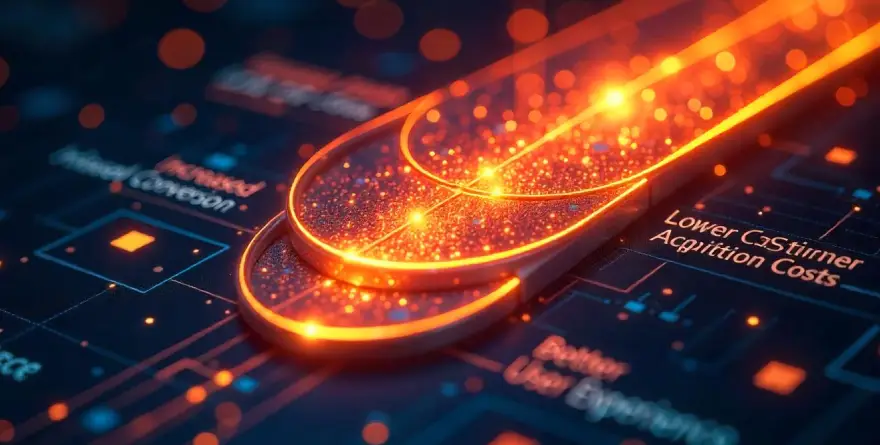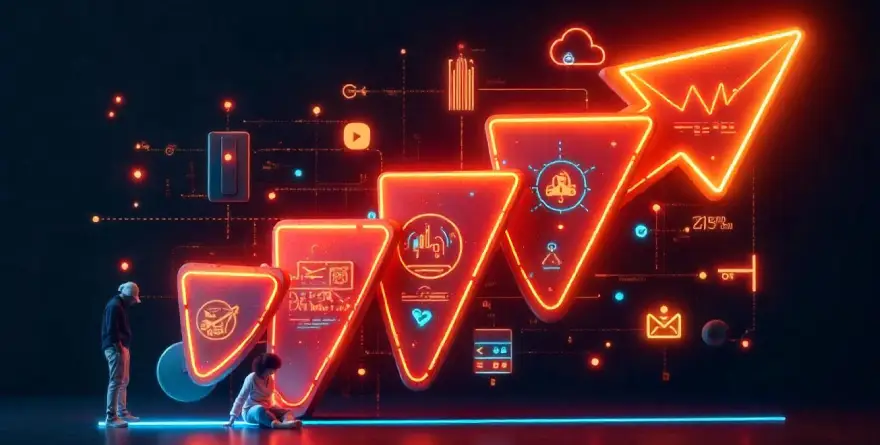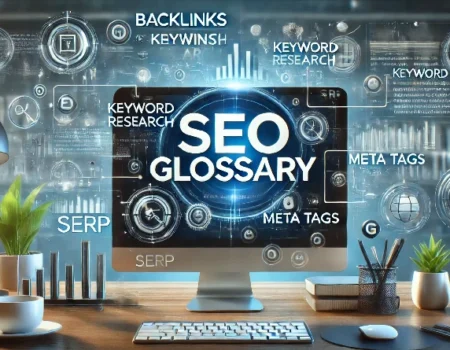How Conversion Funnels Create a Better Customer Journey [+ Tips to Optimize Yours]
In the ever-evolving world of marketing, understanding the customer journey is crucial to improving your conversion rates and boosting business success. One of the most effective tools to map this journey is the conversion funnel. By optimizing each stage of your funnel, you can ensure that potential customers smoothly transition from curiosity to making a purchase, or even becoming repeat buyers. This blog will break down how conversion funnels work, why they’re essential, and tips on how to optimize yours for maximum success.
What is a Conversion Funnel?
A conversion funnel is a step-by-step process that guides a potential customer through various stages, ultimately leading them to make a purchase or take a desired action. Think of it like a water funnel: at the top, you have a large group of leads or prospects, but as they move down the funnel, only a small percentage will convert into paying customers. Understanding each stage within the funnel helps you tailor your marketing strategies to move prospects toward the bottom where conversion happens.
At the broadest point, potential customers enter your funnel. As they move down, you engage them with targeted content and communication, gradually narrowing down the pool until only the most interested individuals remain.
Why Understanding Your Conversion Funnel is Important
For any business, understanding the conversion funnel is paramount to success. Without it, you’re essentially guessing how leads move through your business. Predicting future performance and optimizing your sales efforts becomes nearly impossible. Experts agree that the conversion funnel is crucial for businesses to track and analyze.
By conducting a thorough conversion funnel analysis, you can determine how leads interact with your brand, where they drop off, and where they get stuck. With this insight, you can adjust your marketing strategies and sales strategies to ensure that leads move seamlessly from one stage to the next, maximizing your conversion rate and customer acquisition efficiency.
Conversion Funnel Stages
The conversion funnel is divided into three primary stages, each representing a different part of the buyer’s journey.
- Top of the Funnel (TOFU)
- Middle of the Funnel (MOFU)
- Bottom of the Funnel (BOFU)
This is the awareness stage. Leads at this point have just discovered your brand, often through social media, advertisements, or organic search. Here, your goal is to attract attention and spark interest. At this stage, broad content like blog posts, social media posts, and video ads are effective at drawing in a large number of potential leads.
Once you’ve captured their attention, the next step is to nurture these leads. The MOFU stage is about consideration. Leads are now familiar with your brand and looking for more in-depth information. At this stage, you should provide valuable content like case studies, webinars, or product demos to help your prospects learn more and build trust with your brand. The more personalized and targeted your content, the better the chances of converting these leads into customers.
At the BOFU stage, the prospect is ready to make a decision. They’ve already engaged with your brand and are now considering whether to buy. The focus here should be on converting these leads into customers. Offering product trials, discounts, or clear calls-to-action (CTAs) can significantly increase your conversion rate. This is where the sales team often gets involved, pushing for the final sale.
Conversion Funnel Analysis
Understanding how your leads flow through your marketing funnel is crucial to identifying areas for improvement. Here’s how you can conduct a conversion funnel analysis to ensure that you’re optimizing the right areas:
- Look for High-Traffic Pages with High Drop-off and Conversion Rates
- Discover Where the Best Customers Come From
- Create an Optimization Plan Based on Findings
Analyze pages with the most visitors. Where are people dropping off? Which pages are converting the best? Understanding these high-traffic pages helps you identify both opportunities and challenges in your funnel. Use a custom funnel report to track these metrics and visualize where you might need to make adjustments.
Not all leads are created equal. You need to determine which touchpoints bring in the most valuable customers. Is it from organic search, social media, or paid ads? By identifying the most profitable channels, you can focus your efforts on optimizing those sources to increase your conversion rate.
Once you’ve analyzed your funnel, the next step is to create a plan for optimization. Focus on the stages where people tend to drop off and develop strategies to reduce friction. Whether it’s streamlining your checkout process, improving your website’s user experience, or offering more targeted content, a solid conversion funnel optimization plan will help ensure that more leads move through the funnel.
Benefits of Optimizing Your Conversion Funnel
When executed correctly, conversion funnel optimization brings numerous benefits. Here are some key advantages:
- Increased Conversions
- Lower Customer Acquisition Costs (CAC)
- Better User Experience
- Better ROI
- Creation of a Realistic Sales Pipeline
By eliminating bottlenecks and improving the customer experience, you can see a significant increase in conversions. AIDA models (Attention, Interest, Desire, and Action) are particularly useful at this stage. The goal is to maintain the momentum of the prospect’s journey and convert them to a paying customer.
Optimization can lead to a decrease in customer acquisition costs. By understanding where your best leads come from, you can invest more in high-performing channels and reduce wasted spend on ineffective strategies.
Streamlining your funnel not only increases conversions but also improves the overall user experience. A seamless and intuitive process makes it easier for leads to progress through each stage of the funnel. When people have a good experience, they’re more likely to convert.
Optimizing your marketing funnel ensures that you’re spending your resources effectively. When each step of your funnel is fine-tuned, your return on investment (ROI) improves significantly. Brands that focus on conversion optimization often see a better ROI compared to those who don’t.
A well-optimized funnel provides a clearer picture of the sales pipeline. With a better understanding of conversion rates at each stage, you can forecast sales more accurately and build a more realistic pipeline. This ensures that your team is working with high-value leads and not wasting time on unqualified prospects.
Conversion Funnel Optimization
To ensure your conversion funnel is functioning at its best, consider optimizing each stage:
TOFU: Awareness
At the top of your funnel, your goal is to attract new leads. Look at the different channels you’re using to drive traffic. Are social media ads working better than search engine optimization? Use analytics to measure the effectiveness of each channel and allocate resources accordingly.
MOFU: Consideration
In the middle stage, the aim is to nurture and engage prospects. Is your content resonating with leads? Are they engaging with your blog posts or signing up for your newsletter? By offering more value through targeted content, you’ll build trust and lead them closer to conversion.
BOFU: Conversion
At this stage, you want to make it easy for prospects to buy. Simplify the checkout process, offer clear CTAs, and provide incentives like discounts or trials. Remove any barriers that might cause hesitation, such as unclear pricing or complicated forms.
Conversion Funnels Shouldn’t Be Business Models
While conversion funnels are a great tool for tracking and optimizing the customer journey, they shouldn’t be confused with your overall business model. Funnels represent a linear, one-time process, but your business should be focused on creating an ongoing relationship with your customers. This is where the flywheel model comes in—turning satisfied customers into advocates who drive more business through referrals.
Partner with our Digital Marketing Agency
Ask Engage Coders to create a comprehensive and inclusive digital marketing plan that takes your business to new heights.
Contact Us
Tailor Your Funnel to the Customer
Each business has its own unique sales cycle. Whether you’re selling high-ticket B2B software or low-cost consumer products, your conversion funnel optimization efforts should be tailored to the specific needs of your audience. Understand their behaviors, preferences, and pain points, and align your funnel stages with their expectations.
Looking to optimize your conversion funnel and boost your conversion rate? At Engage Coders, we specialize in conversion funnel analysis and conversion funnel optimization to help businesses drive more traffic, engage potential customers, and maximize sales.
Get in touch today and let us craft a tailored marketing funnel strategy that accelerates your growth!









